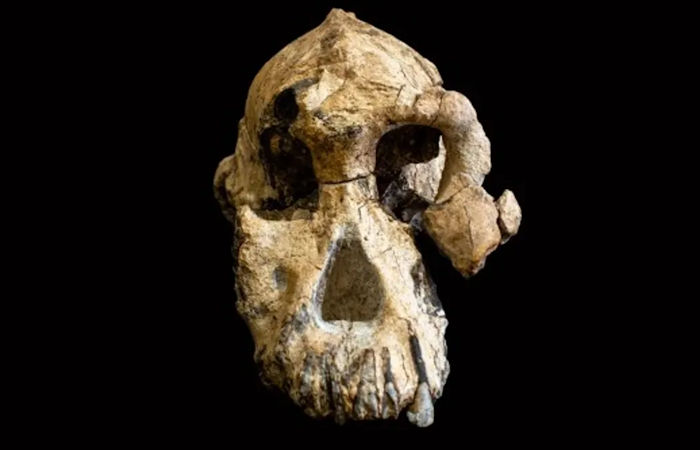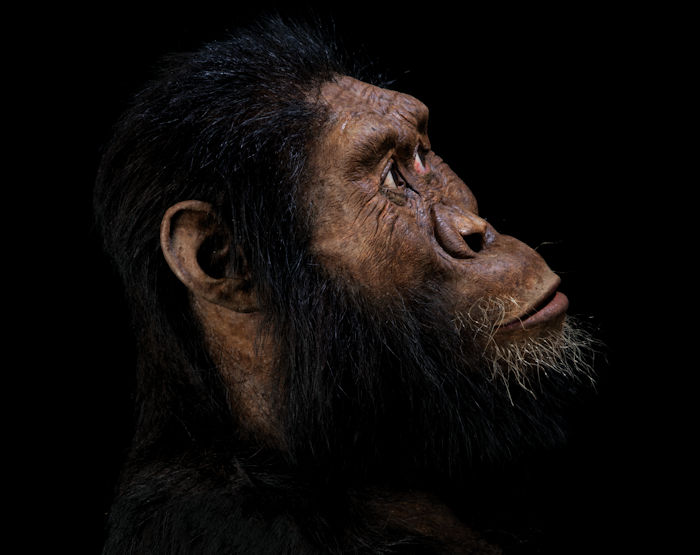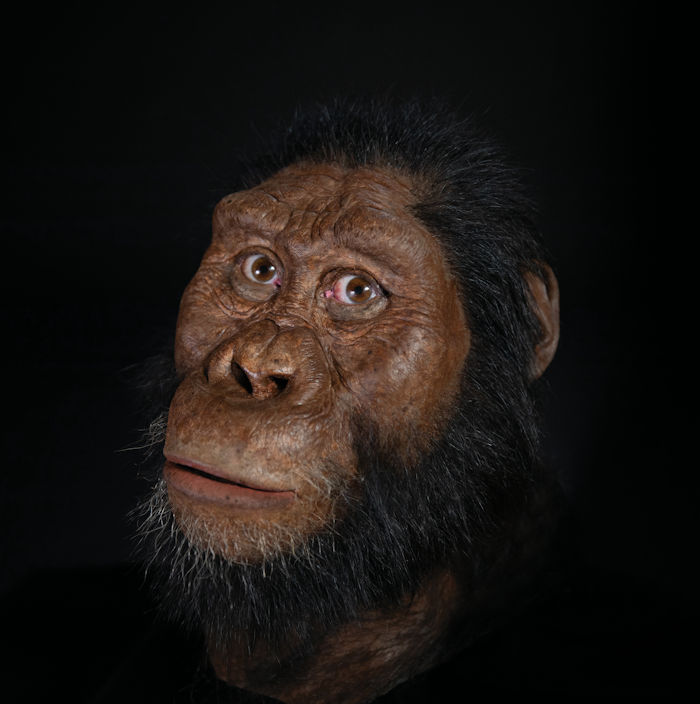Some years ago, at the Woranso-Mille paleontological site in northern Ethiopia, scientists discovered a 3.8 million-year-old skull belonging to a primitive hominin known as Australopithecus anamensis.
Previously primarily known from jaws and teeth, researchers were excited to get their hands on a fossil hominin cranium that was in excellent condition and nearly complete. 1
Australopithecus anamensis is one of the earliest known species related to modern humans, and the ancient history of the hominins can shed new light on human evolution.

The Woranso-Mille skull of Australopithecus anamensis, specimens of which have been dated to 4.2–3.9 million years ago. Photograph by Dale Omori/Courtesy of the Cleveland Museum of Natural History
Scientists have established “Australopithecus anamensis individuals had thickly-built, long, narrow jaws with their side rows of teeth arranged in parallel lines. Their strong jaws combined with heavily enameled teeth suggest Au. anamensis individuals may at times have eaten hard, abrasive foods, but they likely were plant-eaters in general, relying on both fruits and tough foods such as nuts. The sites where remains of Au. anamensis have been found were forests and woodlands that grew around lakes.” 2
Using digital technology, experts have reconstructed the face of our long distant cousin.
“This specimen is the first to give us a glimpse of what Australopithecus anamensis really looked like,” Yohannes Haile-Selassie, head of Physical Anthropology at The Cleveland Museum of Natural History, said in a conference call on Tuesday, IFL Science reports.
[It shows] early human ancestors were very ‘primitive’ until the genus Homo arrived,” he added. “They still have ape-like faces and an ape-like cranial morphology.” Australopithecus means in Latin: “southern ape”.
The Woranso-Mille skull belonged to a bipedal male hominin who lived in a mixed environment, moving from dry shrubland to forest by the river and wetlands. The early hominin species was resourceful, considering its small brain. Before going extinct about 2 million years ago, Australopithecus anamensis was present in southern, eastern, and north-central Africa.
As reported by IFL Science, “the Australopithecus species played a significant part in human evolution, with the genus Homo (as in, Homo sapien) emerging from Australopithecus some time after 3 million years ago.

Facial reconstruction of A. anamensis by John Gurche made possible through contributions by Susan and George Klein. Photograph by Matt Crow, courtesy of the Cleveland Museum of Natural History.
Our understanding of this new skull is now challenging a lot of old assumptions of this mysterious ancestor. One of the best-known members of this genus is Australopithecus afarensis, represented by the famous “Lucy” fossil. Contrary to previous research, this skull suggests that A. anamensis and A. afarensis actually differed quite a bit in appearance.

Facial reconstruction by John Gurche made possible through contributions by Susan and George Klein. Photograph by Matt Crow, courtesy of the Cleveland Museum of Natural History.
It was also once pondered that A. anamensis led the way for A. afarensis in a single evolving lineage. However, the dating of this specimen suggests the two species overlapped for at least 100,000 years. Like most chapters in the story of human evolution, the path is not a simple linear line. Instead, just as this skull further highlights, it’s actually a criss-cross of paths with overlaps and dead-ends.
“This cranium looks set to become another celebrated icon of human evolution,” writes Fred Spoor, a professor of human evolutionary anatomy at UCL in the UK who was not directly involved in this study. 3
“Its discovery will substantially affect our thinking on the origin of the genus Australopithecus specifically, and on the evolutionary family tree of early hominins more broadly,” he added.
The use of digital technology to access and retrieve visual information of extinct hominin species can help scientists to piece together the story of human evolution.
Source: ancientpages.com








